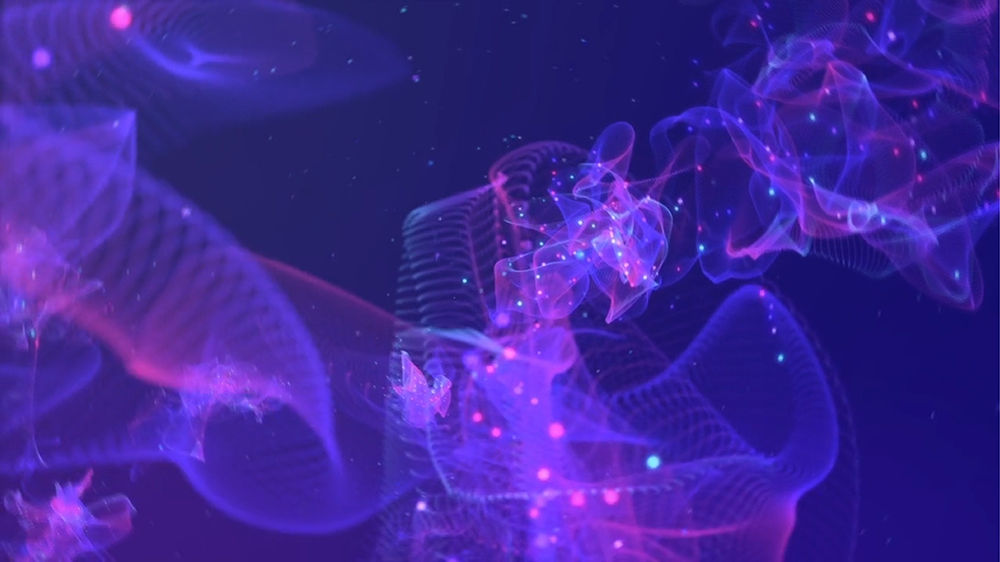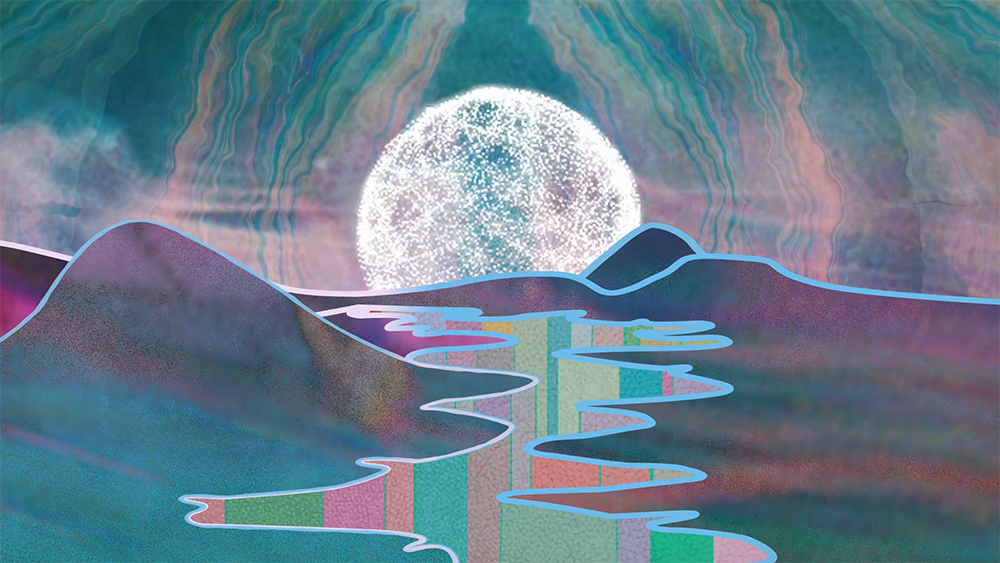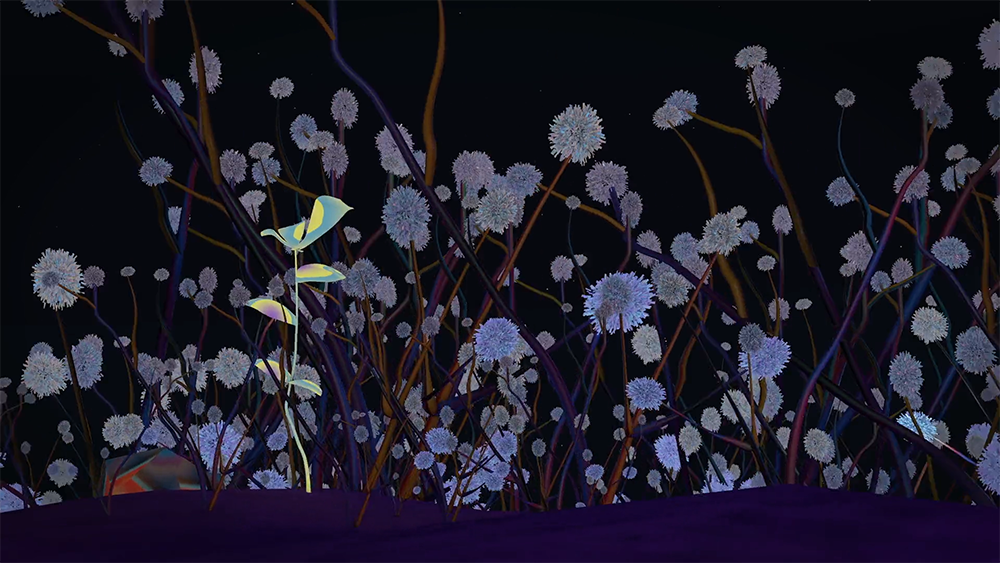I see motion design as a form of visual storytelling. I animate still graphics and create a sequence that builds upon these animated graphics, all designed to express an idea or concept through the sequences.
Born: Taipei, Taiwan
Now: New York, USA
@__aoccho__ | www.aoccho.com
INTERVIEW
First of all, tell our readers what led you to art?
When I was young, I never thought I would end up in the field of art! Coming from a literature, language, and history background, these were the subjects I always loved and spent the most time engaging with while growing up. Before I embarked on the path of art, I always wanted to be a historical researcher.
Back then, I was studying history in Japan, focusing on 17th-century navigation maps. But as I presented my research, I began to think, besides studying history and stories, how can I make historical stories more interesting? Just representing a navigation map, which is full of adventure and struggles with nature, with a single still image seemed too dull.
Later, during that time, I learned the term infographics and delved deeper into motion graphics. It opened my eyes and made me realize that this was the storytelling medium I wanted to primarily explore. And so, I switched lanes and moved forward on the path of motion graphics.
I began self-learning motion graphics skills. To challenge myself, I began creating my portfolio. Eventually, I was fortunate enough to be accepted into an art school in New York, officially, officially stepping into the field.

How has your attitude towards visual art transformed after moving from Taiwan to the USA? How has the new culture influenced your work?
The main difference lies in the emphasis, inclusiveness, and respect for visual arts in the United States. When I came to study visual arts in the U.S., I was very nervous and uneasy, even though this was the path I wanted to pursue. In Taiwan, art and design are relatively undervalued industries, not to mention the level of development of this industry. When I wanted to study motion graphics in the U.S., it wasn’t even a widely recognized term in Asia at that time. Given this background, it was difficult for me to imagine how this industry would develop in the United States.
However, as I studied and worked in the U.S. and collaborated with professionals from different fields, I truly felt the emphasis on visual arts here and the high level of acceptance of various artistic styles. Even though I was just a newcomer fresh out of school when I entered this industry, people actively sought out my expertise when working on projects. These were all things I hadn’t anticipated initially.
This naturally led me to share, discuss, and exchange ideas about our work with others, even with people I had just met. I am also committed to staying humble in all situations.

Let’s talk about the influence of your work and your experience in the field of animation – you have a diverse background in branding, illustration, and social media work. How did you manage to maintain your own style, and how has your voice evolved?
As a motion designer, I believe that a competent designer should be able to master different styles to convey the concept of each brand and project. Motion graphics involve animating still graphics to create visual storytelling and communication. When faced with different projects’ visual languages, although the design assets’ styles, colors, and languages may vary significantly, for me, the focus lies in how to animate these assets and emphasize detail handling. This ensures that the project’s concept is expressed more comprehensively, creating better storytelling.
Therefore, when it comes to maintaining my style and voice in working projects, I believe it should be in terms of storytelling. After all, each project has different color schemes and styles, but the ability to handle details well and tell a compelling story is crucial to delivering a project effectively.
Aocchooo, tell us, what are your works about?
I like to use motion graphics to explore the depiction of mental states and the relationship between visual perception, emotions, and auditory encounters. My creative process starts with a single word, a sentence, or even an audio clip. I transform these into visual elements, imbuing static images with fluid motion to create a dynamic visual effect.
My artworks are inspired by textual descriptions, phonic experiences and emotional experiences. Due to my multicultural background, I find it fascinating how various languages offer different ways of describing the same subjects and the unique manner in which languages express ideas truly captures my attention.
I intend to visualize and embody textual descriptions, cognitive processes, and sensory perceptions, encompassing elements including written words, auditory stimuli, and emotional sensations. In my work, “Before even beginning”,” I visualize the juncture where a new idea emerges suddenly, and the process of conceptualizing this new idea.
By blending motion graphics with linguistic exploration, my art seeks to create a connection between the viewer’s senses and the diverse facets of human cognition.

Why did you choose digital exhibitions as the presentation format for your works? Do you have any plans to participate in physical events?
Actually, I’m not specifically limited to digital exhibitions. It’s just that my works are in the digital and video categories.
The choice of a digital exhibition is considered because the presentation of works is still primarily digital, with less color variation. Another consideration is that digital exhibitions are usually more willing to showcase video art. So, I tend to choose options that can fully display the content of my works.
Of course, I have also participated in physical events and made some friends. Seeing my works exhibited in different forms is quite enjoyable. However, considering the nature of my works being digital art, I prefer venues with screen support.

What advice would you give to newcomers in the field of visual digital art based on your work and exhibition experience? How important is it to enhance your skills and be recognizable as an artist?
Actually, in terms of exhibition experience, I only officially started a few months ago. But I believe that whether it’s in my professional work or in my personal artistic endeavors, continuously learning and staying humble are the most important and core values.
I find that continuously enhancing my skills is crucial. Setting aside the advantages of having multiple skills, both in my professional work and in creating my own art, I often find myself curious about experimenting with new approaches. This mindset often leads me to learn new skills, which in turn allows me to explore more possibilities in my work. Through this process, I get to know myself and my work better.
So, I believe that having the mentality of wanting to enhance my skills or going through this process of learning is beneficial in the creation of artwork.